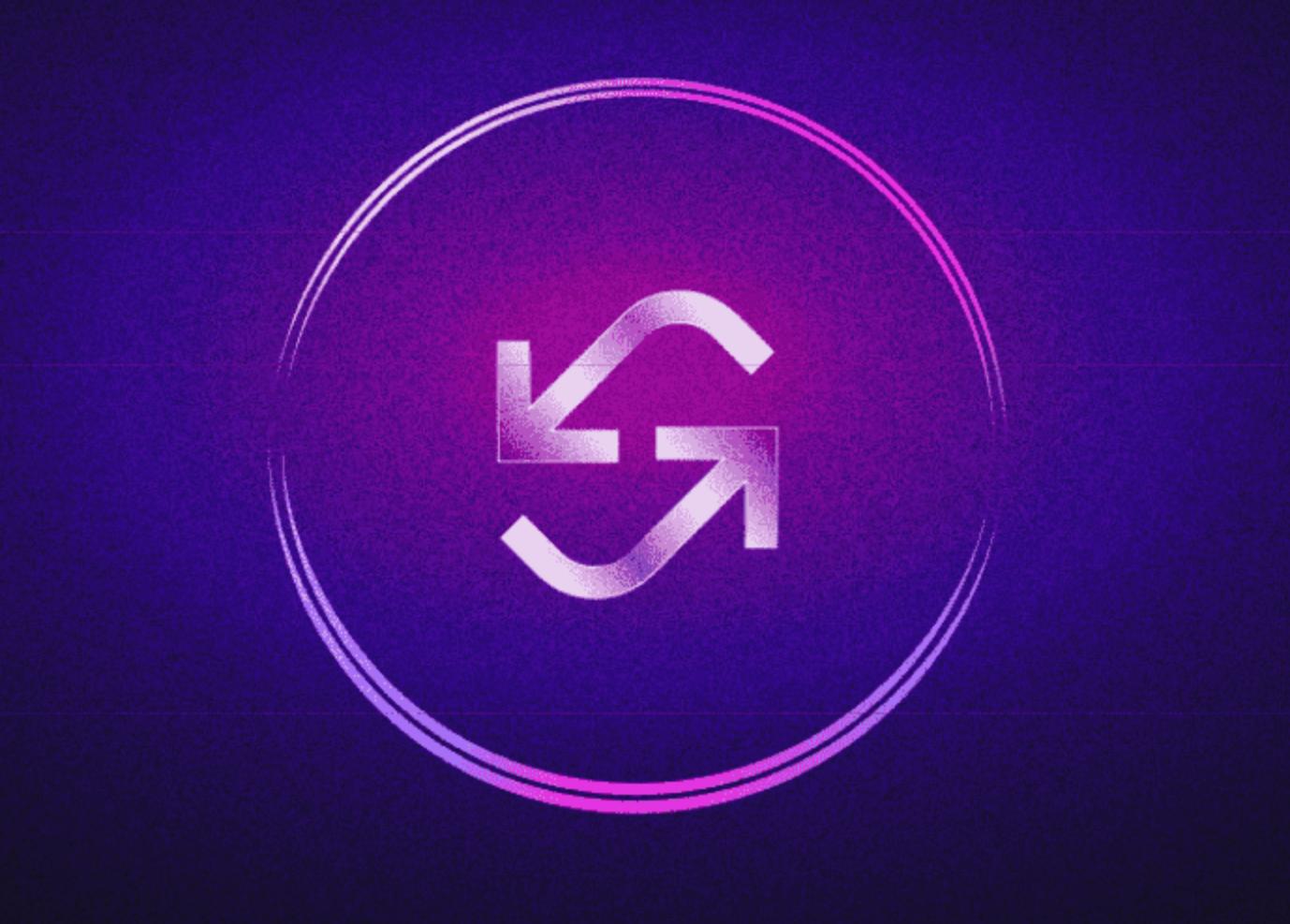A panoramic interpretation of the DEX industry landscape and development trends
Recently, the well-known crypto research organization Messari published a community submission by Rahul Rai, the managing partner of the cryptocurrency hedge fund Gamma Point Capital, titled "The Past, Present, and Future of Decentralized Exchanges."
In the article, the author analyzes the current state and issues of decentralized exchanges in detail, providing specific examples of over ten DEX projects such as Balancer, DODO, 0x, Kyber, and Serum to analyze their technical solutions, and attempts to depict the future development landscape of the DEX ecosystem. Chain Catcher has translated this article and made compilations that do not affect the original intent.
Market makers play a crucial role in the smooth operation of financial markets by continuously quoting prices at which they are willing to buy and sell, increasing liquidity for other market participants, allowing them to trade the underlying assets at optimal prices with minimal slippage. Additionally, by providing liquidity across various exchanges and eliminating price discrepancies between markets, they can enhance overall market efficiency and facilitate price discovery.
Market making ultimately is a complex optimization problem, where participants need to leverage proprietary statistical models and low-latency technology to build sustainable long-term moats. All of this results in market makers being in a low-power dominant and long-tail state, with only a few top participants capturing the vast majority of trading volume.
For example, in the U.S. stock market, Citadel Securities and Virtu together account for nearly 50-60% of the market share. In particular, Citadel Securities supports trading in over 8,000 listed securities and more than 16,000 over-the-counter securities, accounting for about 25% of U.S. stock trading volume and 39% of all listed retail trading volume in the U.S.
In stark contrast to traditional finance, where regulatory and competitive barriers prevent individuals and small traders from acting as market makers, the crypto market offers direct market access to all participants.
Individual traders can fully access the technology stack of centralized trading, enabling them to use the same APIs and servers as professional firms to provide quotes and engage in algorithmic trading. Decentralized finance (DeFi) has further advanced this by implementing decentralized exchanges (DEX) based on automated market makers (AMM), completely democratizing the pathways to market making and providing liquidity.
AMM-based DEXs have proven to be one of the most impactful DeFi innovations, allowing investors to trade seamlessly between cryptocurrencies in a fully decentralized and non-custodial manner through pre-funded on-chain liquidity pools. By simply depositing funds into these on-chain liquidity pools (LP), liquidity providers can earn passive income on their capital through accrued trading fees (based on their percentage of contribution to the liquidity pool).
In recent months, DEXs have achieved unprecedented success. Led by Uniswap, DEX trading volume surged to a record $72 billion in February, and the total liquidity on DEX platforms (also known as total value locked) reached nearly $10 billion, a historic high.
However, despite achieving initial success, AMMs still face a series of challenges. Many inherent issues (such as impermanent loss, capital efficiency, slippage, gas costs, speed, etc.) hinder their progress. In this article, we will introduce three main areas of innovation in DEX and AMM and highlight their most promising implementations:
Capital efficiency and customizable AMMs: Bancor, DODO, Balancer, Deriswap, Uniswap
On-chain market makers and order books: Kyber, 0x, Serum, Raydium
DEX aggregators and cross-chain liquidity: 1inch, Matcha, THORchain
1. Capital Efficiency and Customizable AMMs
The launch of Uniswap's constant product formula x * y = k at the end of 2018 was a pivotal moment, sparking a Cambrian explosion of innovation around AMM curves and constant function market makers (CFMM).
Balancer implemented a constant function algorithm that allows for more than two assets and weights beyond 50%/50%. Curve, launched in early 2020, modified Uniswap's AMM functionality to minimize slippage for relatively stable assets, indicating that subtle adjustments to CFMM curves can significantly enhance capital efficiency and reduce slippage.

However, LPs in AMM pools face some inherent risks and inefficiencies. The most significant and relatively obscure risk is impermanent loss (IL), which refers to the difference in the asset portfolio value over time between providing liquidity to an AMM pool and holding the underlying tokens.
This occurs because AMM market prices do not automatically adjust, so when the overall market price changes, arbitrageurs intervene and profit at the expense of liquidity providers. As a result, the actual earnings of LPs in AMM pools are a balance between accrued trading fees and the impermanent loss caused by price differences.

In addition to impermanent loss, AMMs in current practice also face issues of capital inefficiency, underutilization of liquidity, and multi-token risk exposure. Since AMMs distribute funds uniformly across the entire price range (0, +∞), only the funds allocated near the market price can be effectively utilized, while a large portion of funds is only available when the pricing curve begins to change exponentially. Consequently, AMMs require substantial liquidity to match the slippage found in traditional order book trading.
Moreover, AMMs are often referred to as "lazy liquidity," as the price points offered to traders are uncontrollable, contrasting with the more flexible and agile approach of traditional market makers. Additionally, AMMs typically require LPs to deposit two or more tokens to provide liquidity, often forcing them to take on additional asset risk exposure.
Given the current limitations of AMMs, many protocols have intervened to innovate around capital efficiency and customizable AMM logic. Bancor V2, launched in April 2020, was one of the first protocols to address capital efficiency, impermanent loss, and multi-token risk exposure.
It utilizes a fixed liquidity reserve that dynamically adjusts AMM pool weights using price updates from Chainlink oracles. This keeps the internal aggregated price aligned with external market prices, preventing arbitrageurs from extracting value from LPs in the form of impermanent loss.
Additionally, V2 offers customizable AMM curve logic and integration with lending pools, resulting in lower latency, better pricing, and higher capital efficiency. Finally, by algorithmically anchoring liquidity reserves with Chainlink, LPs can maintain single-token exposure and choose their exposure to any token in the AMM, ranging from 0-100%.
DODO is another protocol innovating around customizable AMM logic, pioneering the proactive market making (PMM) algorithm, which aims to generalize order book matching systems. PMM adjusts the pricing curve by utilizing price oracles, concentrating a larger portion of liquidity around the asset's market price, thus enhancing capital efficiency and reducing impermanent loss. As shown below, the DODO curve is flatter than the Uniswap curve near the market price, indicating higher capital utilization and lower slippage.

Balancer V2 is also a general-purpose AMM protocol innovating around asset efficiency, flexibility, and gas efficiency, implementing a separate vault to store and manage all assets deposited into Balancer pools.
Since the token management and accounting conducted by AMMs are separated from the vault, the liquidity pool can implement any arbitrary, customizable AMM logic, including weighted pools (for constant weight index funds), stable pools (for soft-pegged tokens), and smart pools (for ongoing parameter changes).

With the launch of the Balancer asset manager (a trusted external smart contract that can utilize the underlying tokens stored in the vault), capital efficiency and yield can be improved by lending out unused assets in the AMM to lending protocols. The team recently announced a partnership with Aave to build the first Balancer V2 asset manager.
Additionally, the recently announced Deriswap, in collaboration with Andre Cronje and Sushiswap, combines trading, options, and lending into a single capital-efficient contract. By integrating liquidity and deploying funds across multiple applications, it allows LPs to maintain asset exposure while earning additional yield.
Finally, Uniswap V3 is another highly anticipated project that is said to implement customizable AMM curves and address capital efficiency issues.
2. On-Chain Market Makers and Order Books
Capital markets aim to match buyers and sellers of financial assets in the most efficient and cost-effective manner. Historically, the two main systems implemented by central financial exchanges to match liquidity-seeking buyers and sellers are:
Request for Quote (RFQ): Quoters send quote requests to multiple market makers each time they wish to trade.
Central Limit Order Book (CLOB): Market makers continuously quote prices in the order book, and price takers trade with them.
Both systems have evolved into efficient methods for achieving liquidity and price discovery, surviving the test of time, each with its own advantages and disadvantages. The RFQ system works better when price takers are infrequent and the price is relatively large, allowing market makers to display prices only when requested by the takers.
Most OTC desks employ some form of RFQ technology; for example, when I worked at Morgan Stanley's foreign exchange (FX) desk, we would continuously respond to bid-ask OTC price quotes from hedge funds for large trade orders. When a steady stream of price takers with relatively smaller trade sizes comes in, the CLOB system is most effective, where market makers are happy to send bid-ask quotes algorithmically and continuously.
In DeFi, due to Ethereum's inherent performance limitations, AMMs dominate most DEX liquidity, making on-chain order books and market makers unfeasible. As AMMs become increasingly saturated and professional market makers seek more efficient solutions to provide DeFi liquidity, we are beginning to see rapid innovation in cross-chain RFQ and CLOB protocols. Fully on-chain trading involves token price quoting, order matching, and trade settlement directly on the blockchain itself, while hybrid methods execute orders and matching in off-chain systems.
For example, Kyber is one of Asia's leading fully on-chain DeFi liquidity providers, holding a 5% share of the DEX market. It has facilitated over $1 billion in on-chain trading volume through its Federated Price Reserve (FPR), a liquidity system where professional market makers can maintain on-chain prices by controlling pricing and rebalancing algorithms.
The team launched Kyber PRO in late October 2020, an end-to-end framework based on the FPR system that provides tools, documentation, and technical support to enable professional market makers to easily define and run profitable market-making operations on-chain with minimal smart contract knowledge.
With the recent release of Kyber 3.0, the project plans to transition from a single protocol to a liquidity protocol hub that meets various DeFi application scenarios. Additionally, they plan to launch Kyber DMM, an automated dynamic market maker capable of enhancing capital efficiency and dynamic fees based on market conditions to reduce impermanent loss and increase LP profits.

0x is another leading DEX infrastructure with two main products: a DEX aggregation API (allowing developers to integrate cross-platform asset trading, with over $2.5 billion in trading volume) and a consumer-facing DEX aggregator, Matcha, which has facilitated $2.8 billion in trading volume over the past six months.
Professional market makers can provide liquidity to 0x API users through a hybrid system via RFQ, where order storage and matching are done off-chain, while trade settlement occurs on-chain. With the token economics of v3, the network has paid over $1 million in fees to ZRX holders and market makers.
Additionally, the aforementioned PMM algorithm pioneer DODO recently announced its v2.0 version, aimed at bringing professional market makers on-chain through DODO Private Pools (DPP). Market makers can utilize these private markets and customizable PMM liquidity pools to deploy tailored strategies on-chain and respond dynamically to market conditions. They can also choose to open the liquidity pools to regular user LPs, marking an exciting step in the democratization of professional market makers.
Furthermore, compared to Ethereum, some Layer 1 blockchains offer significantly faster transaction throughput and settlement times, making on-chain orders increasingly important.
For instance, Serum is a native DEX located on the Solana blockchain but can achieve full interoperability with Ethereum, providing a decentralized on-chain limit order book and trustless cross-chain trading. Solana is a blockchain that combines a proof-of-history (PoH) timestamp system with a proof-of-stake (PoS) consensus algorithm to optimize scalability, achieving low transaction costs, sub-second settlement times, and up to 65K TPS (compared to Ethereum's current 15 TPS).
Serum's order book leverages Solana's higher speed and lower costs to deploy a fully on-chain and programmatic matching engine, allowing users to submit orders with specified direction, size, and price. Since its inception, Serum has surpassed $900 million in trading volume, making it one of the fastest-growing DEXs. Given the current throughput and gas limitations of Ethereum-based DeFi protocols, Serum may continue to capture market share.
With the surge of on-chain market makers and order book projects, we are slowly approaching the realization of Haseeb's vision outlined in Unbundling Uniswap, where professional on-chain market makers will compete alongside AMM platforms to commoditize DeFi liquidity. It will be interesting to observe where value ultimately accumulates. Will Ethereum maintain its dominance over other higher-performing blockchains? Can AMMs compete with more capital-efficient on-chain market makers?
3. Aggregators and Cross-Chain Liquidity
DEX aggregators can consolidate liquidity and intelligently route orders to enable users to execute trades optimally, with their trading volume rapidly increasing in recent months. As aggregators continue to capture market share, the demand side is effectively becoming commoditized, with AMM liquidity turning into indistinguishable supply, leading traders to increasingly interact indirectly with DEXs through aggregators, forcing DEXs to focus on having supply and offering competitive prices.
In short, aggregator platforms will compete for traders' funds, while AMMs will compete for LP capital.

Pantera captured this argument well in a recent article:
"We foresee a future trend where liquidity from hundreds of decentralized exchanges can be merged and easily accessed through aggregators like 1inch or Matcha. Market makers like Wintermute can directly inject liquidity into these aggregators, ultimately making the DEX market as efficient as centralized exchanges. The front end is user-centric DEX aggregators, while the back end features efficient, complex algorithms; this combination has the potential to accelerate DeFi adoption and even drive the decentralization of centralized exchanges. In the future, centralized exchanges like Coinbase will become the front end of decentralized exchange infrastructure."
Currently, the two main liquidity aggregators are 1inch and Matcha. 1inch is the leading DEX aggregator, accounting for about 10% of all DEX daily trading volume, often exceeding $300 million daily. As previously noted by Messari, aggregation protocols consist of on-chain smart contracts that execute batch interactions with multiple DEXs.
1inch's proprietary off-chain Pathfinder API optimizes trading paths (speed, cost, and efficiency) for users executing trades through 1inch's on-chain contracts. Since its inception, 1inch has facilitated over $13 billion in trades, half of which were executed in the past three months. In addition to dominating the front-end user experience, 1inch is also actively pursuing a vertical integration strategy, such as the 1inch liquidity protocol and cross-chain integration.
Matcha is a consumer-facing DEX aggregator built on the 0x protocol, utilizing the 0x API and smart order routing to aggregate liquidity and provide optimal trade execution. In January of this year, Matcha averaged over $40 million in daily trading volume, while February's trading volume exceeded $1 billion.
Behind the scenes, Matcha splits trades among 0x Mesh, Kyber, Uniswap, Curve, Oasis, and its proprietary liquidity sources to find the best prices for traders.
Additionally, Matcha further reduces traders' transaction costs by utilizing meta-transactions and gas tokens, minimizing Ethereum gas fees.
Ultimately, for DEX aggregators, capturing value is a struggle, as the lack of network effects, zero switching costs, and fee extraction have turned it into a "race to the bottom." DEX aggregators are also beginning to face competition from wallet and portfolio management platforms, all vying to "control the end user" and become the primary front end for traders.
For example, MetaMask Swaps aggregates liquidity from various aggregators and AMMs, charging a 0.875% service fee per transaction. So far, it has accumulated approximately $10 million in fees, with an average daily trading volume close to $20 million.

Although most DEX aggregators focus on Ethereum, as liquidity spreads across more Layer 1 chains and protocols, cross-chain aggregators and liquidity bridges are becoming increasingly important. As Ethereum gas prices continue to soar, we see users turning to other Layer 1 alternatives such as BSC, Solana, and Polkadot.
Most Ethereum protocols have announced Layer 2 scaling plans, with Synthetix staking already taking place on Optimism, Loopring having an active Layer 2 DEX, and dYdX announcing it will run permanently on Starkware's ZK Rollup, with Uniswap and Curve also set to announce Rollup plans soon.
However, the transition process is slow, and as Ethereum's Layer 2 scales gradually, other blockchains are stepping in to meet the rapidly growing demand.
In particular, BSC has been steadily growing, with its DEX protocol PancakeSwap recently surpassing Uniswap in daily trading volume, and its lending protocol Venus totaling nearly $4 billion in locked assets.
As this trend continues, and with the maturation of new smart contract platforms such as Polkadot, Solana, Avalanche, and Near, cross-blockchain and protocol liquidity aggregation becomes crucial, which is where THORchain comes in.
THORchain is a decentralized cross-chain AMM built on the Cosmos SDK, providing a trust-minimized way to trade tokens across various Layer 1 blockchains.
The network of continuous liquidity pools (CLP) and validator nodes facilitates cross-chain swaps. The protocol's native asset RUNE serves as collateral issued by nodes to ensure network security and as the universal quote currency for each CLP. RUNE is used as collateral to provide cross-chain proof for the validation process of cross-chain swaps. Additionally, it acts as the settlement currency for each transaction in the system, maximizing liquidity for all assets.
From a token economics perspective, THORchain provides RUNE with robust value capture tools that accumulate value based on liquidity. Participants in THORchain earn rewards by bonding RUNE to secure consensus or by collateralizing RUNE alongside external assets in CLPs.
As explained in a recent report by Multicoin, the value of RUNE must always be three times the value of external assets (i.e., liquidity pools) — for every $1 of local assets in the network, limited partners must collateralize an equivalent $1 of RUNE in the corresponding CLP, and nodes in the network must bond $2 of RUNE to sign transactions and provide network security. This incentivizes nodes to operate honestly, as the bond value that can be slashed is always higher than the total value of assets in the liquidity pool.
THORchain has already secured over $85 million in TVL and plans to launch a mainnet supporting BTC, ETH, LTC, BNB, and BCH in the near future. THORchain ultimately aims to become the AMM platform for solving the short-tail assets of crypto assets, a bold and profitable goal.
Moreover, it can provide the foundation for cross-chain DeFi, allowing users to not only trade cross-chain assets but also access cross-chain debt markets, synthetic assets, derivatives, and more.
4. Conclusion
Ultimately, all investors seek to leverage their capital to maximize risk-adjusted returns. AMMs are indeed an innovation from 0 to 1, providing a non-regulatory, uncensored solution for trading and liquidity pools. By truly democratizing market making and providing liquidity providers with a good way to earn capital gains, DEXs and AMMs have been and will continue to be foundational parts of the DeFi stack.











